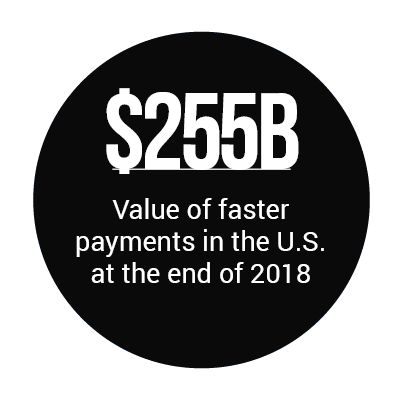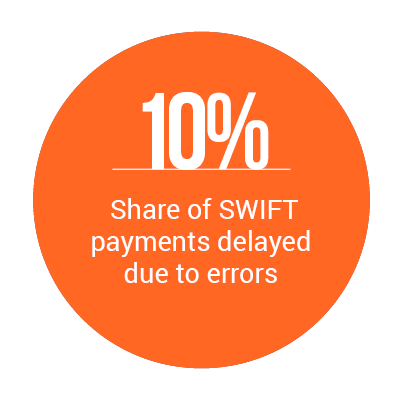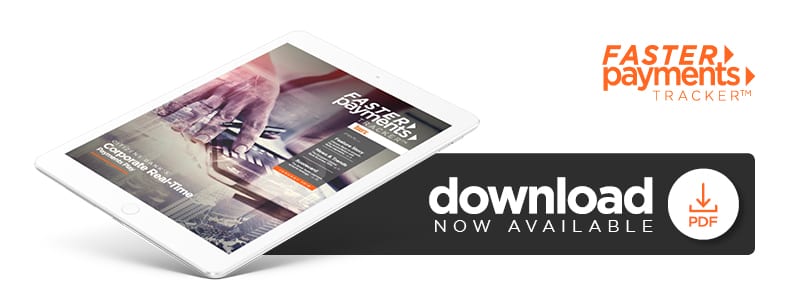Who Will Lead The US To Real-Time Ubiquity By 2020?

It’s expected that more than 56 real-time payment rails will be live by 2020, and the U.S. is hoping to attain real-time payments ubiquity by that point. The demand for faster payments is strong in the U.S., but not all financial players agree on how to achieve it.
 Since The Clearing House (TCH) launched Real-Time Payments (RTP) in 2017, the system has yet to reach ubiquity in the U.S. The Federal Reserve recently sought to propel faster payments adoption by requesting feedback from financial institutions (FIs), retailers and other stakeholders on whether it should create its own real-time payment rail. The responses poured in from credit unions, major retail chains, tech companies and more.
Since The Clearing House (TCH) launched Real-Time Payments (RTP) in 2017, the system has yet to reach ubiquity in the U.S. The Federal Reserve recently sought to propel faster payments adoption by requesting feedback from financial institutions (FIs), retailers and other stakeholders on whether it should create its own real-time payment rail. The responses poured in from credit unions, major retail chains, tech companies and more.
In the January “Faster Payments Tracker™,” PYMNTS dives into the arguments for and against the Fed’s proposal, and explores other faster payment efforts from around the globe.
Around the Faster Payments World
The U.S. isn’t the only country considering how to spread faster payments access. In Peru, the national clearing house, Cámara de Compensación Electrónica (CCE), is working with Vocalink to upgrade its existing payments infrastructure to provide real-time electronic payments processing.
Meanwhile, the European Central Bank (ECB) launched its much-awaited TARGET Instant Payment Settlement (TIPS) system. The rail has even drawn interest from players outside the Eurozone, with Sweden’s central bank reportedly considering joining TIPS.
Faster payments aren’t just advancing on national and multinational levels, however. While consumers wait for sweeping system-wide changes, they still crave speedier services that can streamline the payments they make in their daily lives, and companies like Stack Sports are working to meet that demand. Recently, the sports technology company rolled out a solution that provides a more seamless, digital way to transfer money between youth sports stakeholders, such as parents, referees, players and coaches. The solution leverages Fiserv’s software development kit.
Deep Dive: Weighing The Federal Reserve’s Faster Payments Proposal
Stack Sports’ solution is intended to replace clunky payment methods like cash and checks with digital solutions. However, other financial players have said that replacing paper isn’t enough. Digital payments must flow in real-time to smooth processes and save retailers from headaches, like multiday waits for credit card payments to settle.
While Australia, the U.K., Hong Kong and many others have launched system-wide real-time payment schemes, the U.S. lags behind. Efforts to remedy this are intensifying, with many in the U.S. saying it’s high time for a ubiquitous faster payments scheme.
Yet, while demand is strong, not all financial players agree on how to achieve it. Dispute currently rages over whether TCH’s RTP system can reach ubiquity by 2020, or whether the industry would be better served if the Federal Reserve were to step in with its own system.
The new Deep Dive examines the arguments for and against the Federal Reserve’s proposal, including the sides taken by players like credit unions, major banks, tech companies and retail giants.
Citizens Bank On Corporate Real-Time Payments
 Some players believe that the market is already satisfied by TCH’s rail, with no Federal Reserve rail necessary. One argument they make in RTP’s favor is that, unlike a hypothetical forthcoming Fed offering, RTP is available now. Citizens Bank is one such player taking advantage of RTP’s availability to offer real-time payments to its corporate customers.
Some players believe that the market is already satisfied by TCH’s rail, with no Federal Reserve rail necessary. One argument they make in RTP’s favor is that, unlike a hypothetical forthcoming Fed offering, RTP is available now. Citizens Bank is one such player taking advantage of RTP’s availability to offer real-time payments to its corporate customers.
In this month’s feature story, PYMNTS caught up with Matt Richardson, head of product solutions at Citizens Bank, to discuss the corporate need for real-time payment capabilities, how to meet that need and how TCH (of which Citizens is an owner bank) is working to increase RTP adoption.
About The Tracker
The PYMNTS “Faster Payments Tracker™,” powered by Fiserv, is the go-to resource for staying up to date on faster payment developments and initiatives on a month-by-month basis. The Tracker highlights the contributions of different stakeholders, including institutions and technology providers coming together to make this happen.
